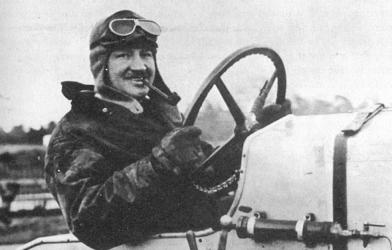
british anzani archive:





Maclure ended up working on a plagiarised version of his own engine design!
By the end of 1925 Maclure had cured the faults he had found in the Cubitt
engine and production continued for another two years until the four cylinder
cars were withdrawn in 1927.
Anzani struggled on in receivership until November 1925 when British Anzani’s
newest director decided to take a hand. Charles J Fox of Fox Pianos had only
joined the board in January 1925 and yet within a year had taken over the
company renaming it the British Vulpine Engine Company and embarked on a
programme of expansion. Gustave Maclure was invited back once more and
rejoined his old firm as works manager and stayed there until 1927 when he left
to go back to Riley cars where he became works manager. The new company
was not to last long. By July 1926 it had itself gone into liquidation forced into
bankruptcy by some ill luck and poor judgement on behalf of Charles Fox.
Morgan cars ordered their engines by the hundred thereby playing one
manufacturer off against the other as each new contract was bid for. Because of
the increasing keenness of the prices inevitably some quality had been
sacrificed and a problem developed with exhaust valves in the Anzani/Vulpine
engines. Morgan complained and Anzani provided replacement valves - Morgan
demanded more and Fox objected. Morgan cancelled their order and Fox sued
for breach of contract, and lost. The company was bankrupt again and had lost
a valuable customer into the bargain. Fortunately for Anzani/Vulpine’s other big
customer, Frazer Nash, there were a number of engines already made and
there was no immediate shortage for the Kingston-on-Thames based company
to worry about.
Archie Frazer-Nash was looking about for other suppliers though and wasn’t
particularly happy with what he’d found. Then a chance meeting with Eric Burt in
August 1926 changed everything. Eric Burt was a director of Mowlems (as was
his father) the international civil engineering company and enjoyed the lifestyle
of the young and rich. Nash had met him at a motor racing event where Burt
was competing with his Burt Special Aston Martin/Anzani and they got to talking
about their engines. Nash thought the young man was just another keen garage
proprietor/racer and invited him to the factory for a chat but by the time he
turned up a week later Nash had realised who he was and an idea began to
form.
Eric Burt and his brother were persuaded by Nash to put up the bulk of the
money to resurrect the Anzani/Vulpine company. They renamed it the British
Anzani Engineering Company and with Eric Burt’s wife Elizabeth as his nominee
on the board of directors and with other directors Archie Frazer-Nash and R.G.H
Plunkett-Greene (the financier of A.F.N.) the next phase of Anzani history began.
The new company began it’s life on February 18th 1927 still in the old Scrubbs
Lane factory but it wasn’t long before the first factory move came. The lease on
the Scrubbs Lane site expired at the end of that year and Burt moved Anzani’s
into an adjacent site of the Kingston-on-Thames factory of A.F.N. Ltd. (the
Frazer Nash company name). The new company was further encouraged when
Morgan relented and returned to Anzani with more orders for engines for their
three-wheelers.
The Fox programme of range expansion continued and several new innovations
were adopted. The 11.9 hp was adapted for marine use and marketed as an
inboard engine and was still sold in various states of tune for car use. The V-twin
range was expanded to incorporate three 1,000cc and 1,100cc motorcycle
engines (also sold as the aero engine) and two 1,100cc water cooled cyclecar
engines plus the 500cc single.
Whilst on his third period at Anzani Gustave Maclure had designed his third
engine and the new company decided to look again at this SOHC design. It was


Archibald Goodman Frazer Nash was born in India on 30th June
1889. He served his apprenticeship at Willans & Thompson
(engineers) of Thames Ditton and In 1905 he became a partner in
GN Cars. By 1910 GN had produced their first ‘cycle car’. In 1923 he
started the Frazer Nash company to develop the chain driven
principle of the GN. Nash resigned in 1929 and began his own
engineering consultancy business.
His invention and skill led him to develop products for the
construction industry, the RAF, the Defence Ministry and Atomic
Energy industry among others. He died in 1965.







